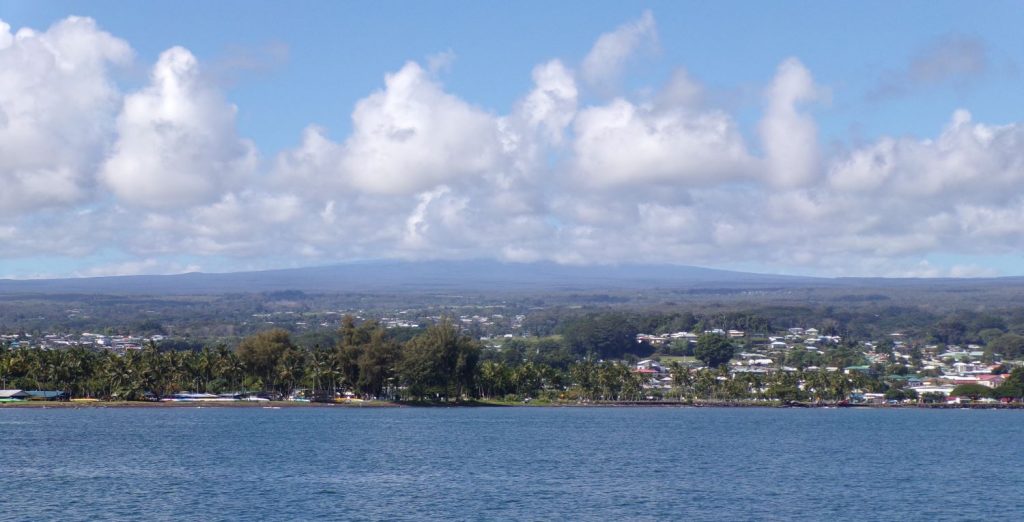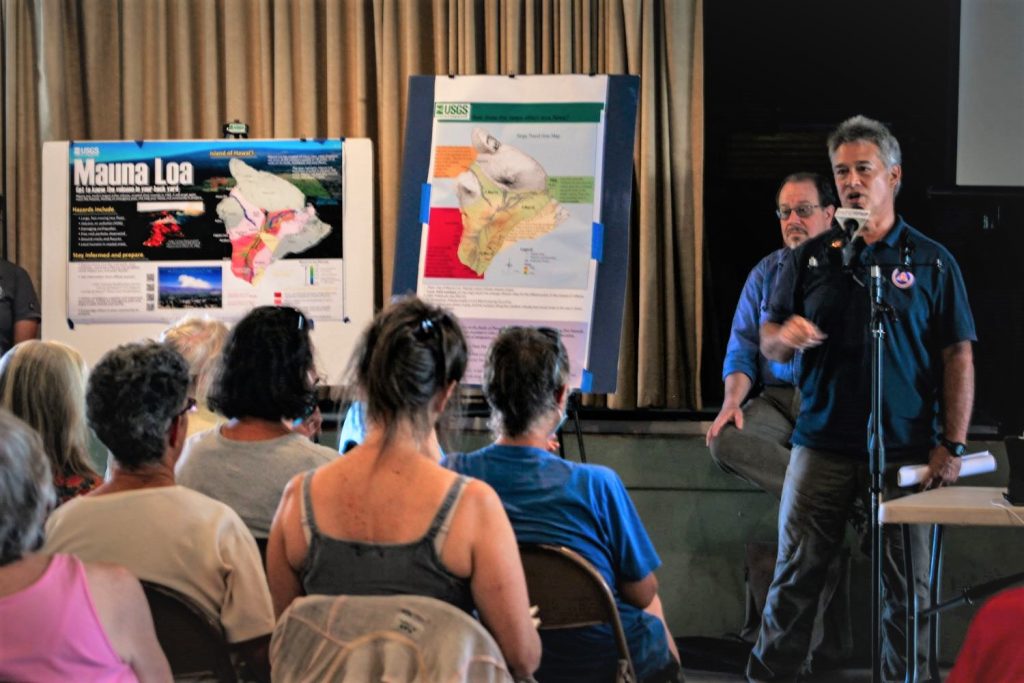Mauna Loa alert level for erupting remains at yellow (advisory), despite the hype
Mauna Loaʻs alert level remains at yellow, or advisory. But some recent headlines from media around the United States and even in Hawai‘i are sending a more ominous message.
“Hawai‘i’s Big Island gets warning as huge volcano rumbles,” reads the headline for an Associated Press story from Oct. 27. “Warning given as Mauna Loa continues to rumble,” said KITV4 for a story Oct. 28.

Other examples of recent headlines include “Warning as Hawai‘i’s biggest volcano rumbles,” “Mauna Loa volcano sets off warning signals in Hawai‘i” and “Residents of Hawai‘i’s Big Island warned of potential ‘lava disaster’ as world’s largest active volcano rumbles.”
The Hawaiian Volcano Observatory and Hawai‘i County Civil Defense have issued no recent warnings regarding Mauna Loa.
“I saw some of those news articles as well and a lot of them are featuring photos not even of Mauna Loa volcano,” Katie Mulliken, a geologist with the volcano observatory, said. “They’re showing photos of Kilauea, either from the 2018 eruption or previous eruptions such as the one at Pu‘u ‘O‘o. And that can certainly cause alarm, especially depending on the headline, making it seem like an eruption is impending or ongoing.”
That is not the case.
The hype has even been enough for the Hawai‘i Tourism Authority to put out a message reassuring travelers and reminding them that Hawai‘i is a dynamic and ever-changing place.
“Mauna Loa volcano is not erupting at this time and recent news of the U.S. Geological Survey Hawaiian Volcano Observatory monitoring Mauna Loa is no reason for travelers to alter their travel plans to Hawai‘i Island or any of the Hawaiian Islands at this time,” the state tourism agency said in its Oct. 31 e-bulletin.
It’s been nearly 40 years since the volcano last erupted and it has been in a period of heightened unrest since September. Seismic activity below the volcano’s summit and caldera spiked in late September, with Hawaiian Volcano Observatory instruments recording as many as 100 quakes a day at certain points.
“The unrest is likely caused by renewed input of magma into Mauna Loa’s summit reservoir system,” the observatory said in its Mauna Loa daily update Friday. “As the reservoir expands, it is triggering small earthquakes directly beneath Mokuʻāweoweo caldera and in a region just to the northwest of the caldera.”
The update said 43 small-magnitude earthquakes from 2-3 miles below Mokuʻāweoweo caldera and 4-5 miles beneath the upper-elevation northwest flank of Mauna Loa were detected from Thursday to Friday. Both regions have historically been seismically active during periods of unrest on Mauna Loa.
Global positioning system instruments at the summit and on the volcano’s flanks also continue to measure inflation at rates elevated since mid-September. However, no significant surface deformation has been seen in the past week.
“The locations of recent shallow earthquakes are similar to those prior to the 1975 and 1984 Mauna Loa eruptions, but other precursory signals are missing,” according to the Frequently Asked Questions about Mauna Loa Volcano. “Signals that have preceded eruptions include upward migration of earthquakes, sustained strong harmonic tremor, accelerated deformation and overall increase in earthquakes.”
Because of that heightened unrest, however, the Hawaiian Volcano Observatory changed its messaging from weekly to daily updates. The volcano’s alert level hasn’t changed from advisory since 2019 and Mulliken said the observatory sees no signs of an imminent eruption.
“That could of course change in the future, but we’re using this as an opportunity to encourage people on the Island of Hawai‘i, especially in areas that could be impacted by an eruption, to revisit their (emergency) plans,” she said. “There are a slew of hazards that can impact residents here, so it’s always good to have some kind of emergency plan in place, and situations like this are just a good reminder for folks to do that.”
Fortunately, most of Mauna Loa’s past 33 eruptions were confined to the caldera region. However, when lava does break out in other locations, it can flow rapidly down the volcano’s steep slopes.
Frank Trusdell, another geologist with the Hawaiian Volcano Observatory who has spent most of his career studying and monitoring Mauna Loa, said during a community meeting last month in Ocean View that lava made it to the ocean within three hours during a 1950 eruption in the volcano’s Southwest Rift Zone.
The volcano observatory can forecast eruptions, but Scientist-in-Charge Ken Hon said during the Ocean View meeting that if and when one does break out, the alert level won’t change until the observatory knows with certainty Mauna Loa will erupt.
“We can certainly forecast them; however, it could be a relatively short amount of time between when we see signs that an eruption might occur and then when that eruption occurs,” Mulliken said.
That’s why people living on the volcano need to be prepared and why Civil Defense has been hosting the community meetings in partnership with the Hawaiian Volcano Observatory.
Two community meetings have been hosted so far, the one in Ocean View and another in Pāhala, to update residents about the volcano’s activity and answer questions. Another is planned from noon to 2 p.m. Saturday in the cafeteria of Konawaena Elementary School in Kealakekua.
Civil Defense and the volcano observatory work closely together and are in constant contact when it comes to volcanic hazards on the island. Both will keep the public updated regularly if and when something happens.
Mulliken urged the public to pay attention to those trusted sources instead of hyped headlines.
“We always encourage everyone to check our website,” she said. “If something were to happen, it would be on our website. That’s the most reliable source of information.”
Mulliken speculated that the change in messaging and community meetings could have something to do with all the media attention surrounding Mauna Loa lately, and with the 2018 eruption of Kilauea in lower Puna still fresh in people’s minds, “that might be part of it.”
Sure, the unknown is scary. You never know when the next fissure in life will break out and erupt an unexpected problem. The best course of action is to be as prepared as possible so if — and when — the time comes, the fear doesn’t take over.
“Yeah. Mauna Loa is an active volcano. It will erupt again,” Mulliken said. “But as a resident, and I can certainly do this too, I live on the Island of Hawai‘i, think about how it could impact you. If you can think about that in advance, if and when it does happen, then you’ll be better prepared.”
For more information about Mauna Loa, click here. Click here for the Hawai‘i County Civil Defense volcano hazards page and here for the Hawaiian Volcano Observatory website.









